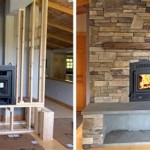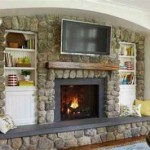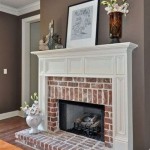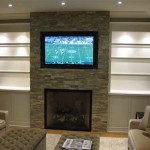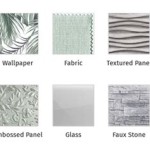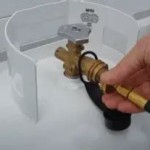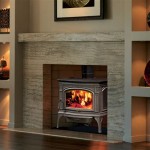Concrete Fireplace Hearth: A Comprehensive Guide
A fireplace hearth serves as a vital component of any fireplace system, fulfilling aesthetic and functional roles. Beyond its visual appeal, it provides a non-combustible surface that protects the surrounding floor from sparks, embers, and direct heat. Among the various materials used for hearth construction, concrete has emerged as a popular choice due to its versatility, durability, and design flexibility. This article will examine different aspects of concrete fireplace hearths, including their benefits, types, installation considerations, and maintenance.
Concrete hearths offer a wide range of advantages. One significant benefit is their exceptional heat resistance. Concrete can withstand high temperatures without cracking or warping, making it suitable for various fireplace types, including wood-burning, gas, and electric. Furthermore, concrete is a durable material, resistant to scratches, stains, and impact damage. A properly sealed and maintained concrete hearth can last for many years, even under heavy use. The material’s customizable nature is another key advantage. Concrete can be cast into various shapes, sizes, and thicknesses to suit specific design requirements. It can also be stained, polished, or textured to achieve a desired aesthetic, allowing for seamless integration with the room's overall décor.
Understanding the Benefits of a Concrete Hearth
The advantages of using concrete as a fireplace hearth material are numerous, particularly when compared to other common options like brick, tile, or stone. Concrete's heat resistance significantly reduces the risk of fire hazards, preventing damage to surrounding flooring materials such as wood or carpet. This is crucial in maintaining a safe and functional fireplace environment. The long-term durability of a concrete hearth translates to lower maintenance costs over time. Unlike some other materials that may require frequent repairs or replacements, concrete is resistant to cracking, chipping, and fading, ensuring a long-lasting and aesthetically pleasing hearth.
The design flexibility that concrete offers is particularly appealing to homeowners seeking a custom look. While other materials may be limited in terms of shape and color options, concrete can be molded into virtually any form. This allows for the creation of unique and personalized hearth designs that complement the architectural style of the home. Options include creating a seamless hearth that blends directly into the floor, or crafting a raised hearth that serves as a focal point within the room.
Finally, consider the cost-effectiveness of concrete. While the initial investment might be comparable to other high-quality materials, the long-term benefits of durability and low maintenance often make concrete a more budget-friendly choice. Investing in a well-installed and sealed concrete hearth can provide years of reliable service, eliminating the need for frequent repairs or replacements.
Types of Concrete Hearths
Concrete hearths are available in various forms to meet different design and functional needs. Pre-cast concrete hearths are manufactured in a controlled environment and are available in standard sizes and shapes. These hearths offer consistent quality and are relatively easy to install. They are a popular choice for homeowners looking for a simple, cost-effective solution. Poured-in-place concrete hearths, as the name suggests, are cast directly on-site. This allows for greater customization in terms of size, shape, and thickness. Poured-in-place hearths are ideal for complex designs or when precise dimensions are required. However, they require more skilled labor and can be more time-consuming to install.
Another variation is the use of concrete pavers or tiles. These individual units can be arranged to create a decorative hearth surface. Concrete pavers and tiles are available in a wide range of colors, textures, and sizes, offering a high degree of design flexibility. They are relatively easy to install and can be a good option for DIY projects. Furthermore, decorative concrete hearths can incorporate various design elements, such as exposed aggregates, embedded stones, or colored pigments. These techniques can enhance the aesthetic appeal of the hearth and create a unique focal point in the room. The choice of which type depends on the individual project's scope, budget, and desired aesthetic outcome.
Regardless of the chosen type, proper planning and surface preparation are crucial for a successful concrete hearth installation. This involves ensuring a level and stable subfloor, as well as accurately measuring and marking the desired hearth dimensions. Careful attention to detail during this initial phase will contribute significantly to the overall quality and longevity of the finished product.
Installation and Maintenance Considerations
Proper installation is essential for ensuring the performance and longevity of a concrete fireplace hearth. The installation process typically involves preparing the subfloor, pouring or setting the concrete, and applying a sealant. The subfloor must be level, stable, and free of debris to provide a solid foundation for the hearth. Reinforcement, such as wire mesh or rebar, may be necessary for larger hearths or those subject to heavy loads. When pouring concrete onsite, it is essential to use a proper concrete mix and ensure adequate curing time. Curing involves keeping the concrete moist for several days after pouring to allow it to fully hydrate and gain strength.
Sealing is a crucial step in protecting the concrete hearth from stains, moisture, and wear. A high-quality concrete sealant should be applied after the concrete has fully cured. The sealant will penetrate the concrete pores and create a protective barrier. The type of sealant should be chosen based on the specific requirements of the hearth and the type of fireplace being used. Regular maintenance is also important for preserving the appearance and functionality of the concrete hearth. This includes sweeping or vacuuming the hearth regularly to remove dust and debris. Spills should be cleaned up promptly to prevent staining. A mild detergent and water can be used to clean the hearth, but harsh chemicals should be avoided.
Periodic resealing may be required to maintain the protective barrier. The frequency of resealing will depend on the type of sealant used and the level of use the hearth receives. Inspecting the hearth regularly for cracks or other damage is also important. Small cracks can be repaired with concrete patching compounds, but larger cracks may require professional repair. With proper installation and maintenance, a concrete fireplace hearth can provide years of reliable service and enhance the beauty and functionality of any living space. Regular inspections, prompt repairs, and preventative maintenance are key to extending the life and maintaining the aesthetic appeal of the concrete hearth.

How To Build A Concrete Fireplace Hearth

Maxwell Design Concrete Hearth Surround Cement Elegance

Kobocrete Colyton Standard Size Concrete Fireplace Hearth

Kobocrete Southleigh Polished Concrete Fireplace Hearth Tv Unit
Surround Series Concrete Fireplace Surrounds

Concrete Fireplace Custom Design Republic

Polished Concrete Hearths Eco Grind

Concrete Fireplace Surrounds Hearths Mantels Network

Concrete Fireplace Custom Design Republic

Updating Fireplace Hearth No Demolition Required Single Girl S Diy
Related Posts

